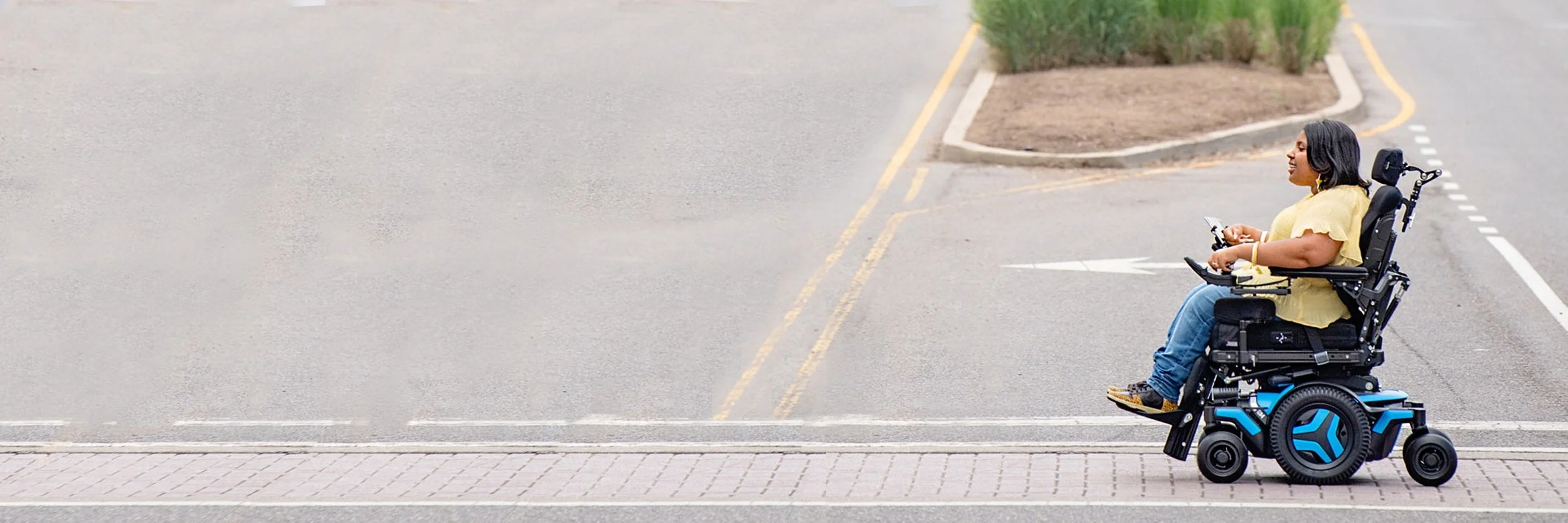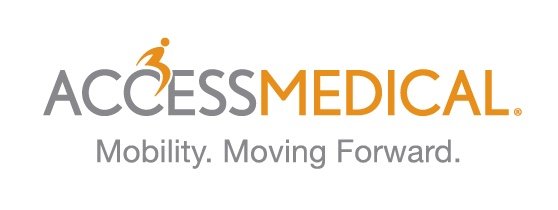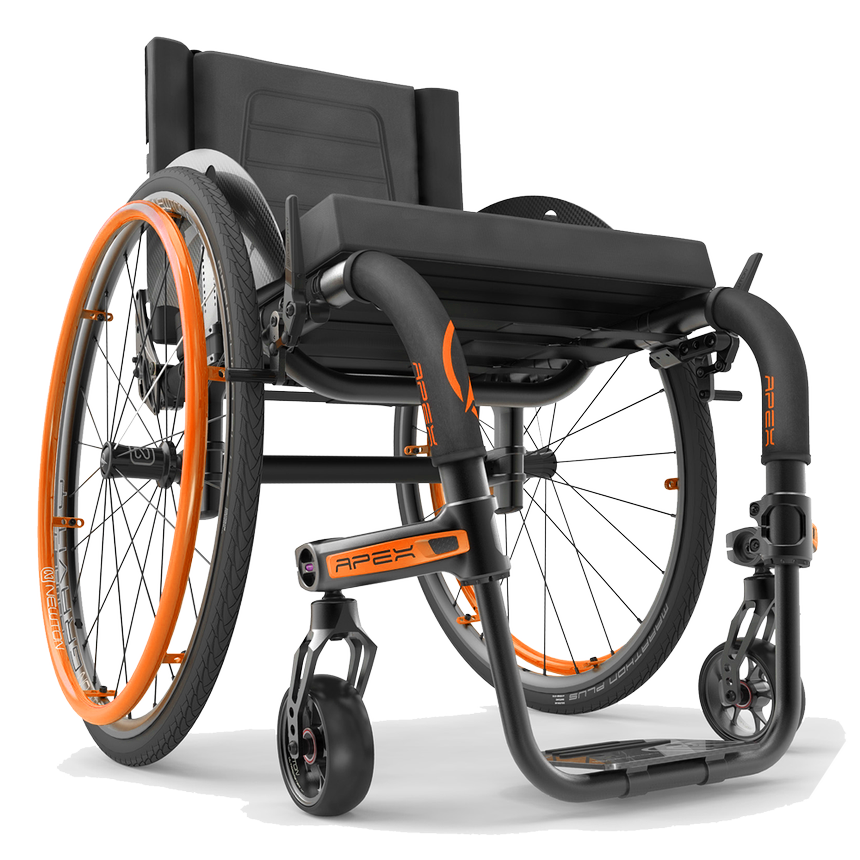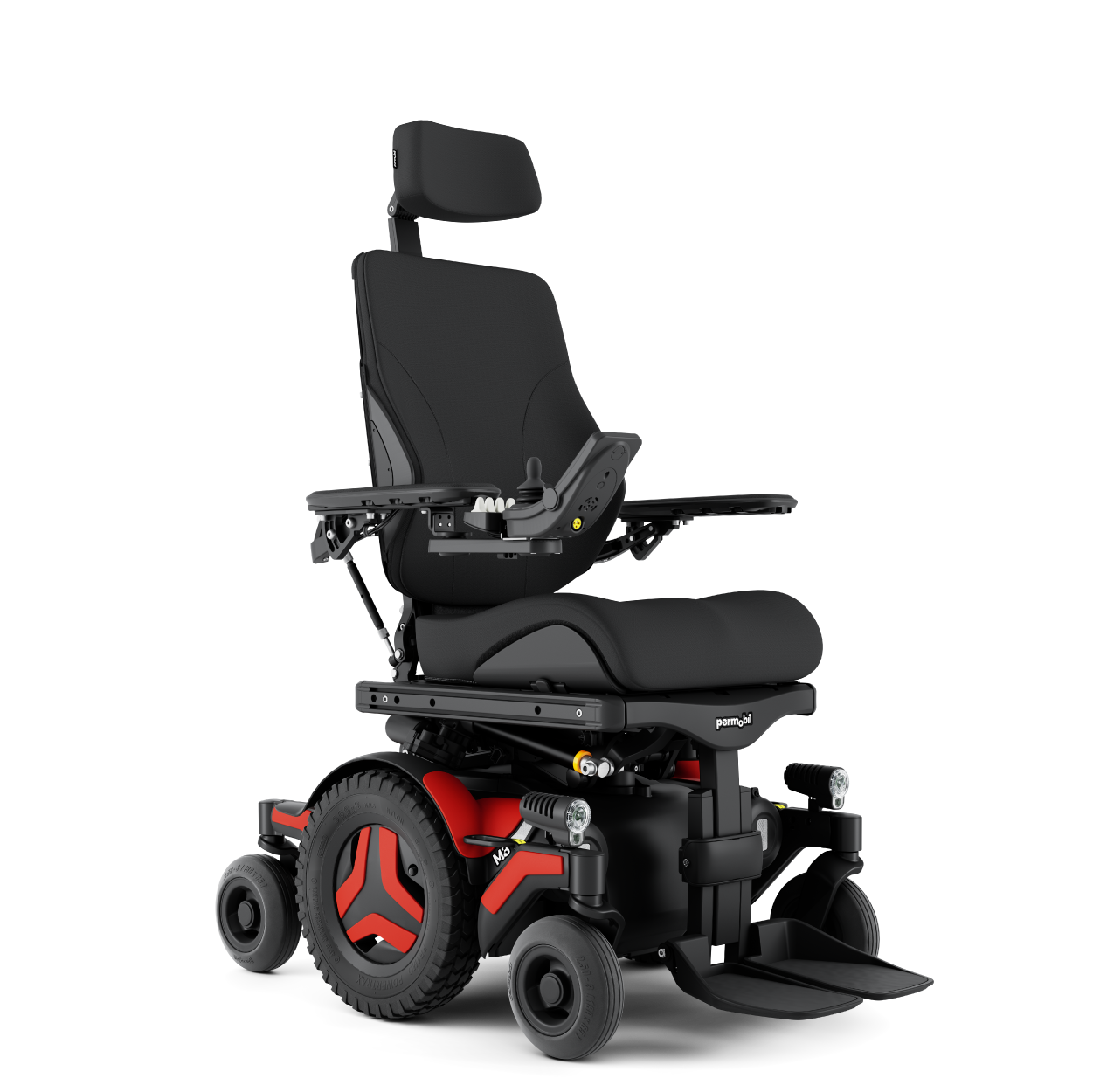
Wheelchair Products.
Industry Leading Wheelchairs and Accessories Perfectly Customized to Fit You.
Access Medical has partnered with the industry’s leading wheelchair and wheelchair accessory companies to provide its clients with the highest-quality products available. We stand behind every product we recommend because we know our manufacturers and we are committed to providing only the best.
Each one of our wheelchair partners has a wide variety of wheelchairs and products that they offer. When it comes to your wheelchair, there are literally thousands of options that can go along with it. From cushions and seating systems to wheels and harnesses.

Your needs are unique. The equipment should be as well.
Our dedicated staff of professionals will help bring simplicity to your selection process.
Ultra Lightweight Manual Wheelchairs.
-
An ultralight manual wheelchair (ULWC) is defined as a fully customizable (adjustable and/or configurable) wheelchair that is as light as possible, is designed as an individual’s primary mobility device and does not include features such as tilt or recline. Depending on the source, an ultralight wheelchair has been defined as less than 30 lbs., (13.61 kg) or less than 25 lbs. (11.34 kg).
The weight of an ULWC depends on numerous features incorporated into the overall design of the wheelchair, and includes seating as well as any other accessories added. These additional features and accessories, often incorporated into the seating system (seat cushion and back support), are necessary to meet the unique postural support requirements of the individual with a disability. Consequently, the final overall weight of the system (wheelchair, seat cushion, back support and postural supports) may vary.
Reference:
-
Rigid
One-piece frame is comprised of bent and/or welded tubes
Leg rest hangers are integrated
Why use a rigid frame?
Generally lighter weight due to fewer parts. This is significant for push efficiency and loading into vehicles. Less parts can increase durability
More rigid equals more efficient. Folding frames will flex more which takes energy away from the push
Rigid frame wheelchairs fit in small areas as well! Consider a fold-down back & quick release wheels
Folding
Two-piece frame connected with cross bars for folding
Removable/swing-away leg rests available
Why use a folding frame?
User choice! If someone has been using a folding WC for a long time or just likes folding frame wheelchairs, then that is reason enough
Standing, or partial standing, transfers are easier with swing-away leg rests. There are options on rigid frame wheelchairs, but generally a folding WC is easier for these clients
People who propel the wheelchair with their feet. There are options for rigid frame wheelchairs, but they tend to require custom builds
If there is need for elevating leg rests
Transport efficiency for bariatric clients
-
Client is a full-time/long-term wheelchair user
Client requires customization such as axle configuration, wheel camber angle, front and/or rear seat-to-floor height (seat slope), or WC frame size that can’t be accommodated by a K0001-K0004
This requires an evaluation by a PT/OT, a letter of medical necessity, and the involvement of an ATP in the equipment selection process
Tilt-In-Space Wheelchairs.
-
A wheelchair with the power tilt (tilt-in-space) feature allows the whole chair to tilt up to 30 or 60 degrees, depending on the model, while maintaining your hip and knee angles at 90 degrees. In most cases, this is done with the touch of a button, allowing you to move your body independently.
tilt-in-space wheelchairs help to facilitate feeding and respiratory function, reduce pressure beneath the pelvis, and improve visual alignment by holding the head upright.
-
1. Pressure Relief
People should have the ability to reposition themselves every 15 minutes. If you are affected by a spinal injury, muscle diseases, or cerebral palsy, you may not have the strength to reposition yourself. Tilt in space wheelchairs helps easily reposition the user and as a result, be able to relieve pressure throughout the body.
2. Remedy for Fatigue
Fatigued in a wheelchair is very common. A tilt in space wheelchair assists your body in reducing the amount of effort it takes to remain upright.
3. More Independence
A tilt in space wheelchair allows users to be more comfortable and have more freedom. More comfort can mean more productivity. More time in your wheelchair and less time in bed means more opportunities to be independent.
4. Great for Transferring
If you need assistance getting from the wheelchair to the bed, tilt in space wheelchairs are a great solution. The chair will tilt the user and make it easier to transfer from the chair to a bed or other places.
5. Better Quality of Life
Tilt in space wheelchairs are more comfortable than a regular wheelchair and have more capabilities. All of these things help improve your quality of life. More independence, more comfort, more freedom. A tilt in space wheelchair is perfect for improving your quality of life.
-
For people who may be at risk of pressure injuries due to sitting in one position for long periods of time.
Power Assist Wheelchairs.
-
A wheelchair power add-on or power assist is a medical device Class I that provides manual wheelchair users with an easy-to-use power boost. It is designed for people who are unable to walk but who can independently move in a wheelchair.
-
Wheelchair power add-on can easily be removed from chair when needed for transport for medical appointments, work, family events, in the family vehicle without requiring a fully equipped van. This can enhance the person's ability to maintain paid employment, volunteer work and other endeavours to be a productive member of the family and society.
-
Wheelchair power add-on devices provide a more functional and less expensive option (versus a motorized wheelchair) for people who still have some ability in pushing a manual wheelchair.
Group 3 Power Wheelchairs.
-
A Group 3 power wheelchair is customized with rehab seating, it can operate at speeds up to 4.5 mph, and it is available with front, rear, or mid-wheel drive.
A Group 3 power wheelchair must have the ability to have some combination of tilt, stand, recline or lift functions.
-
Designed to help maintain better positioning, feel more secure and reduce driving fatigue so you can conquer daily activities with ease. A compact base offers maneuverability in tight spaces without sacrificing performance.
-
Group 3 power wheelchairs are intended for patients with limited mobility that may be afflicted by diseases such as: Amyotrophic Lateral Sclerosis (ALS), spinal cord injuries resulting in quadriplegia, stroke (CVA) with hemiplegia, late stage Parkinson's, late stage Multiple Sclerosis (MS), cerebral palsy or Muscular Dystrophy.
Power Wheelchair Wheel Options.
-
• Better vantage point
• Better traction while climbing
-
• Smallest turning radius
• Smallest width
-
• Tracks straight over long distance
Wheelchair Power Options.
Alternative Drive Controls.
-
The Head Array is a power wheelchair alternative driving method that works well for clients who have fair to good head control.
-
Sip-and-puff or sip 'n' puff (SNP) is assistive technology used to send signals to a device using air pressure by "sipping" (inhaling) or "puffing" (exhaling) on a straw, tube or "wand." It is primarily used by people who do not have the use of their hands.
-
Customized controls for your wheelchair in the form of electronic tablets.
-
Easily manoeuvrable foot control works like a normal joystick - just with your ankle movements. Move ankle forward to go on, move backward to go back.
-
A Fiber Optic Sensor is a sensor switch designed for use by individuals with little to no strength, mobility, or communication.
-
The Micro Joystick is a joystick module which can be connected directly to the wheelchair electronics to control the wheelchair functions. It is a very small, proportional joystick, specifically designed for people with extremely limited movement and muscle strength.
Seat Cushions.
-
General use wheelchair seat cushion, width less than 22 inches, any depth
-
Positioning wheelchair seat cushion, width less than 22 inches, any depth
-
Skin protection wheelchair seat cushion, adjustable, width less than 22 inches, any depth.
-
Skin protection wheelchair seat cushion, width less than 22 inches, any depth
-
Skin protection and positioning wheelchair seat cushion, width less than 22 inches, any depth.
-
Skin protection and positioning wheelchair seat cushion, adjustable, width less than 22 inches, any depth.
Custom Wheelchair Seating.
-
Custom molds and seating to exact curvature of the spine, providing many health and functional benefits including decreasing the risk of pressure sores, and enabling proper breathing and swallowing by helping you maintain an upright posture.
ReWalk™ Robotics.
-
ReStore™ Exo-Suit
ReStore is a powered, lightweight soft exo-suit intended for use in the rehabilitation of individuals with lower limb disability due to stroke. It is the only post-stroke gait training solution that provides both dorsiflexion and plantarflexion assistance to facilitate functional gait training.
ReWalk™ Personal
ReWalk is a wearable robotic exoskeleton that provides powered hip and knee motion to enable individuals with spinal cord injury (SCI) to stand upright, walk, turn, and climb and descend stairs*. The system allows independent, controlled walking while mimicking the natural gait pattern of the legs.











